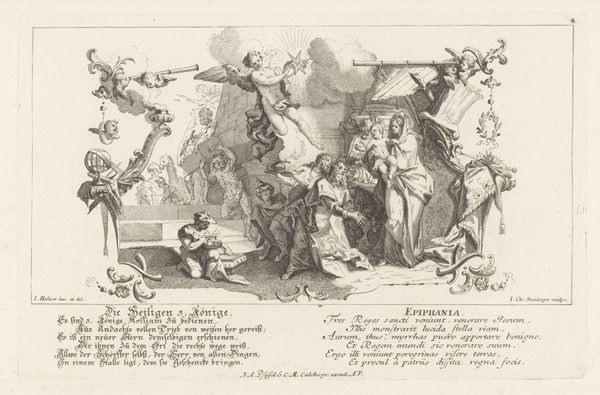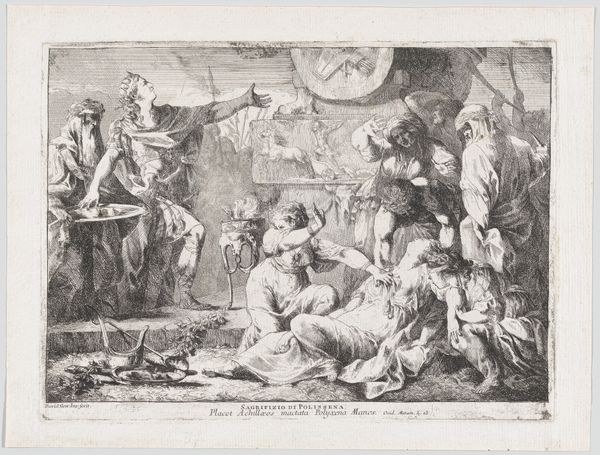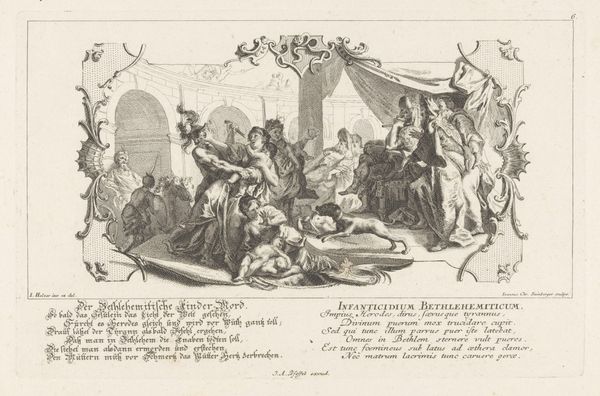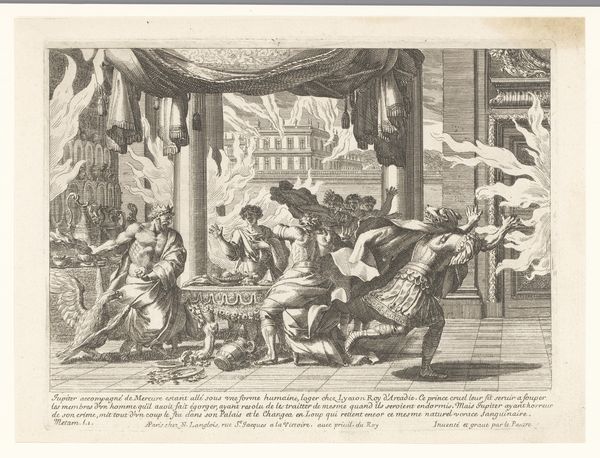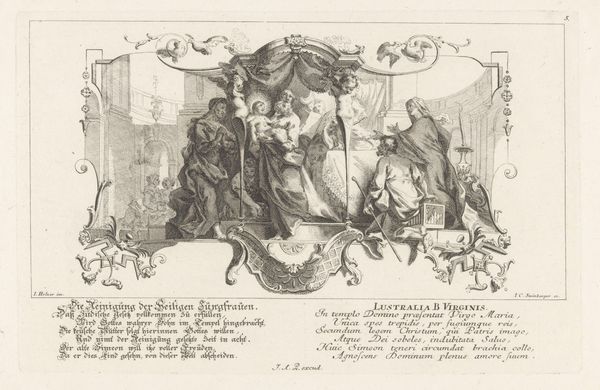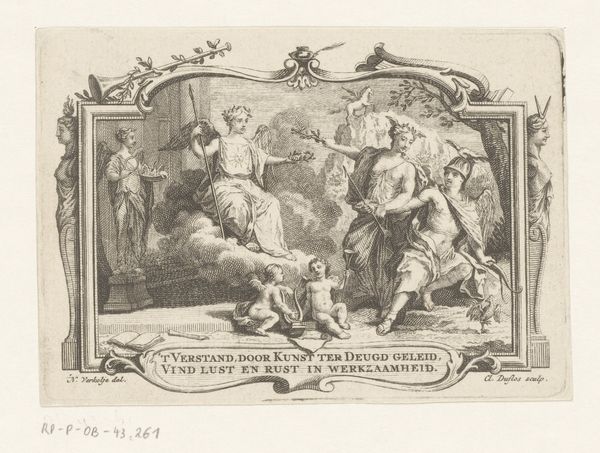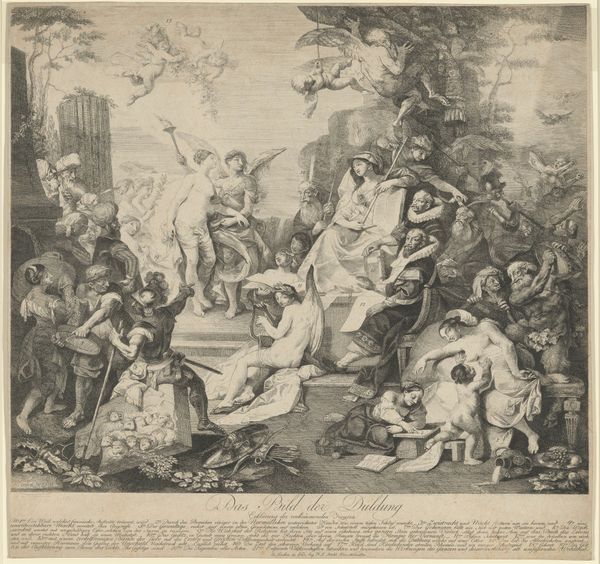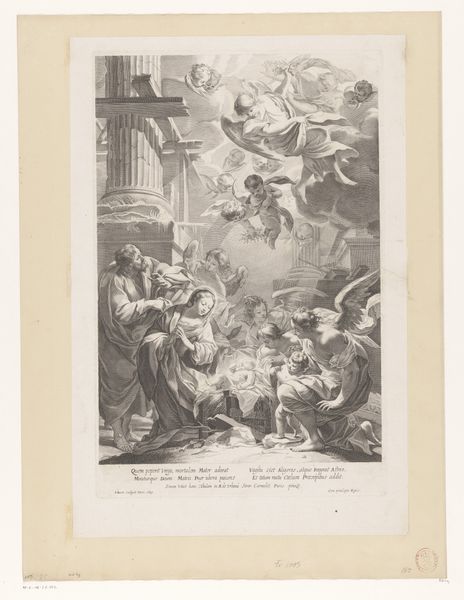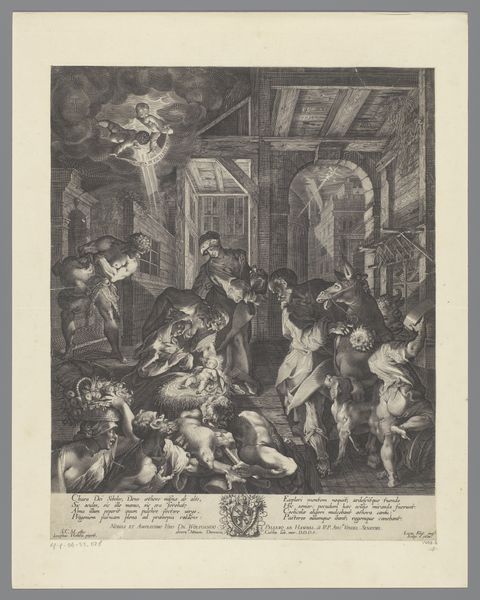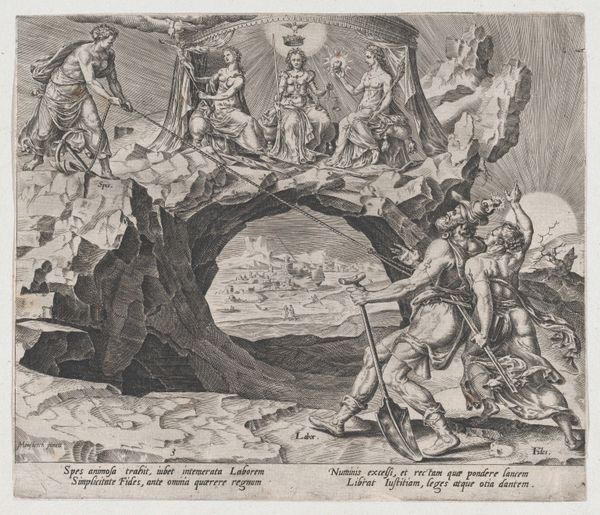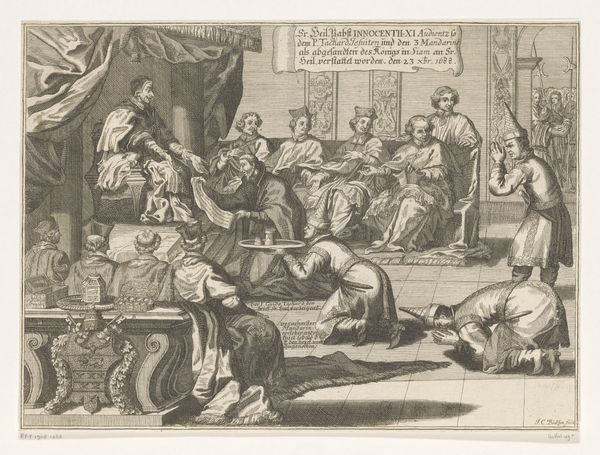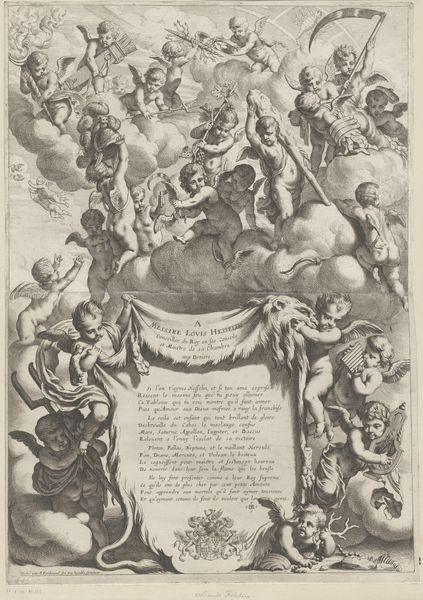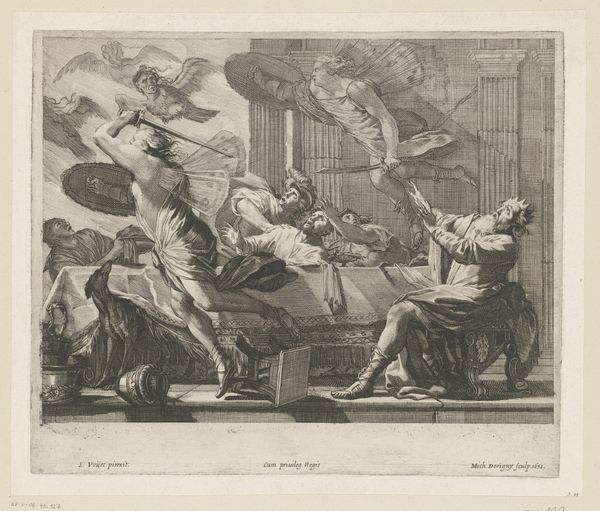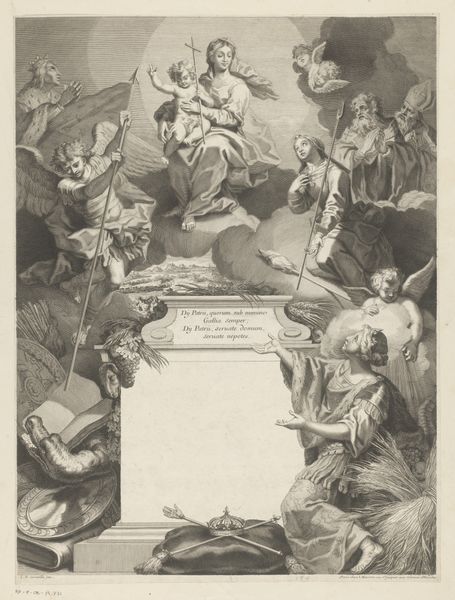
print, engraving
#
baroque
# print
#
old engraving style
#
figuration
#
line
#
history-painting
#
engraving
Dimensions: height 193 mm, width 295 mm
Copyright: Rijks Museum: Open Domain
Curator: This engraving, titled "Annunciatie," was created sometime between 1719 and 1727 by Johann Christoph Steinberger. It's currently held in the Rijksmuseum collection. I'm struck immediately by the incredibly intricate detail, the baroque sensibility. It almost vibrates with energy, despite being a static image. Editor: My first impression is a question of power and representation. Note how Gabriel dominates the scene, elevated both by the stairs and dynamic pose. It underscores the very fraught act of supplication, or in this case, a divine command delivered to a young woman who, as we can read on the image, "is still untouched". The very term, “untouched”, and its connotations of purity as powerlessness are key. Curator: Contextually, prints like this served an important public function. This imagery disseminated religious narratives, shaping the socio-cultural understanding of these stories. Steinberger's skill would have made this impactful across broad audiences, solidifying the church’s and perhaps the state's role. Editor: Precisely. The composition further emphasizes power dynamics: the bright light emanating from Gabriel contrasts with Mary’s shadowed space, as if to suggest divine interference, if not divine violation. Considering baroque art’s role as propaganda, who does this scene benefit? What social structures are supported by depicting Mary as essentially passive? Curator: While I see your point, the scene is a moment of momentous decision for her; to become the mother of Christ or to resist. Editor: But even that ‘choice’ operates within strict socio-political boundaries and conditions: the only acceptable answer for her time. Her future depends entirely on accepting her subservient, reproductive destiny. That golden light, those putti...they’re visual tools meant to convince, not enlighten, reinforcing prescribed roles for women within religious dogma and the state. Curator: Still, consider that by agreeing she defies Roman Imperial dictates, so it could be argued she has control in resisting both earthly and marital power in this instant. Editor: Agreed. What is more, perhaps this moment allowed, and still allows, viewers and female artists to meditate on questions of control and choice which women across various societies have been subjected to, or compelled by? Curator: Seeing it from that angle adds even greater depth and contemporary value.
Comments
No comments
Be the first to comment and join the conversation on the ultimate creative platform.
